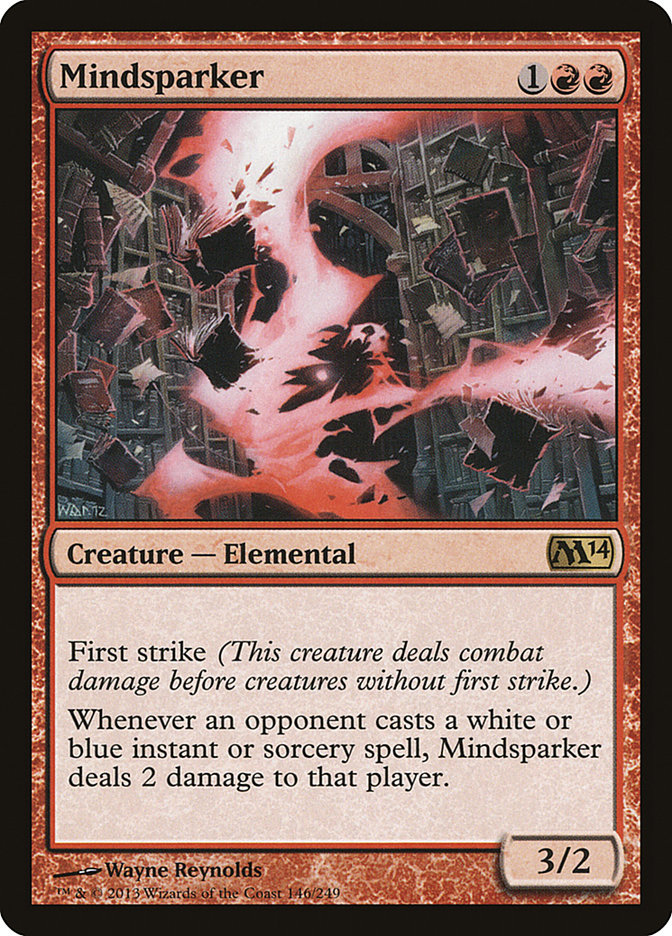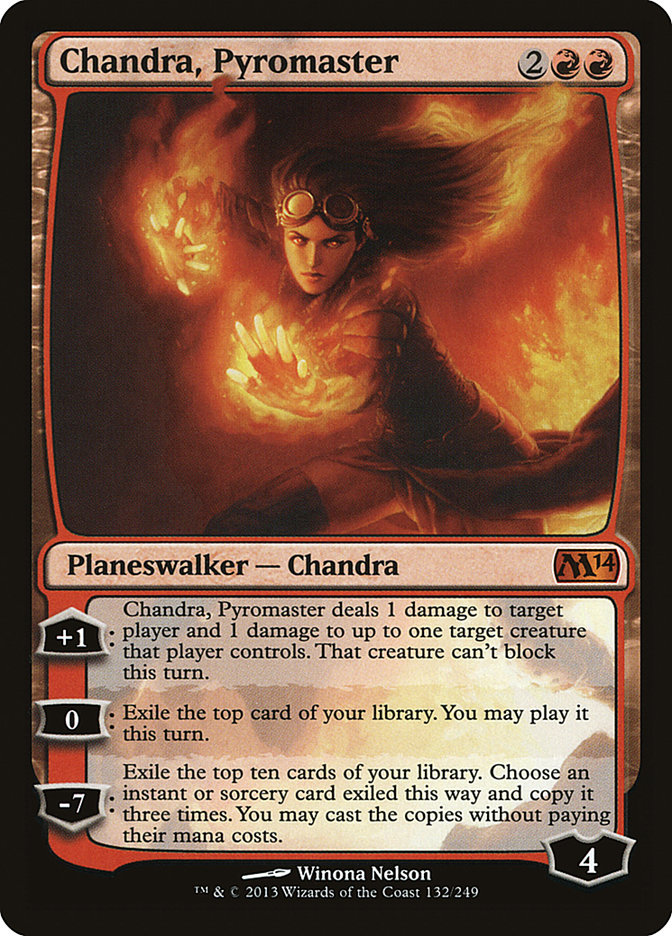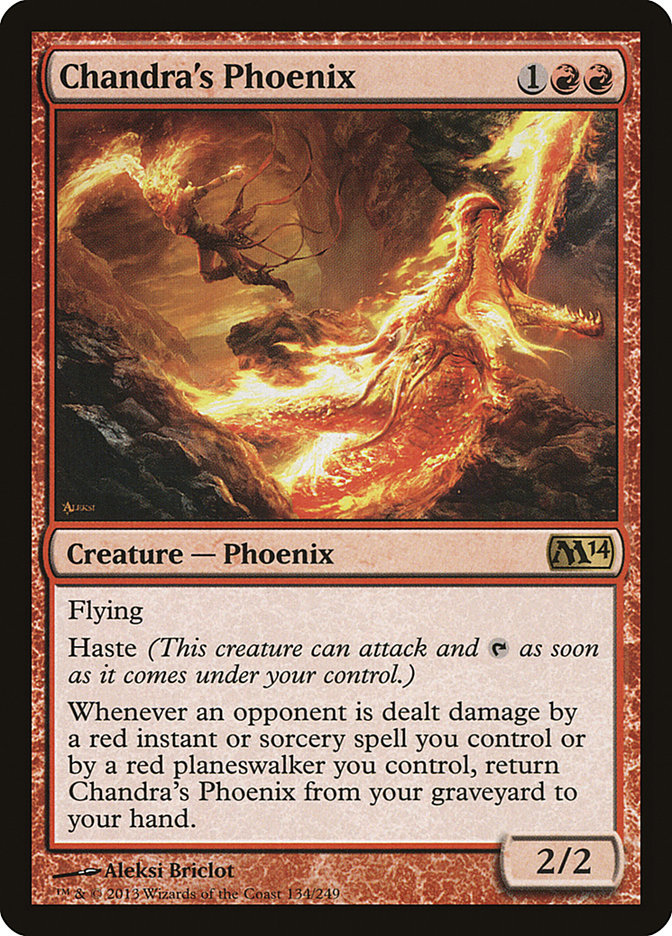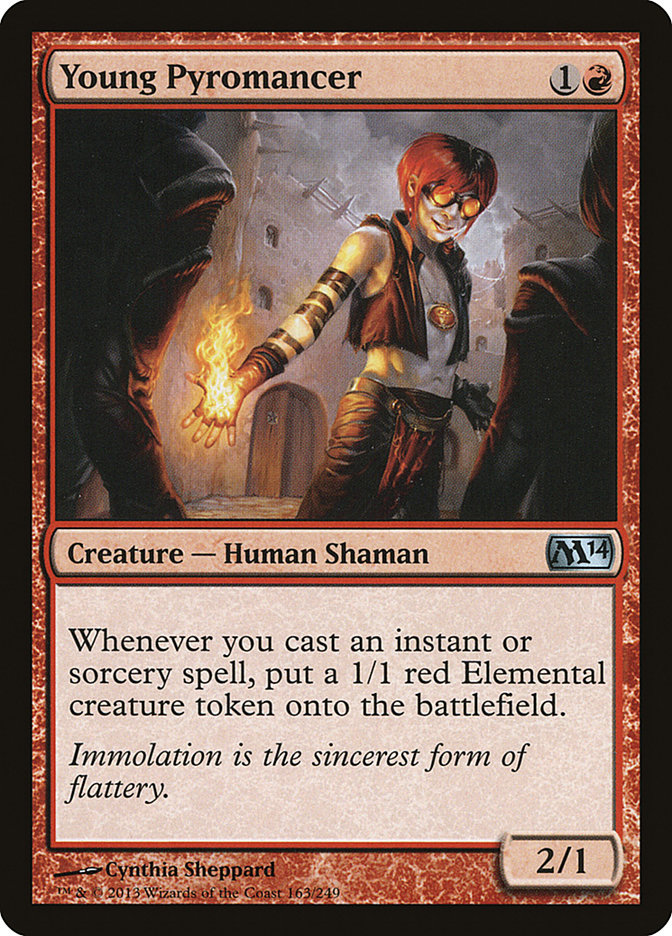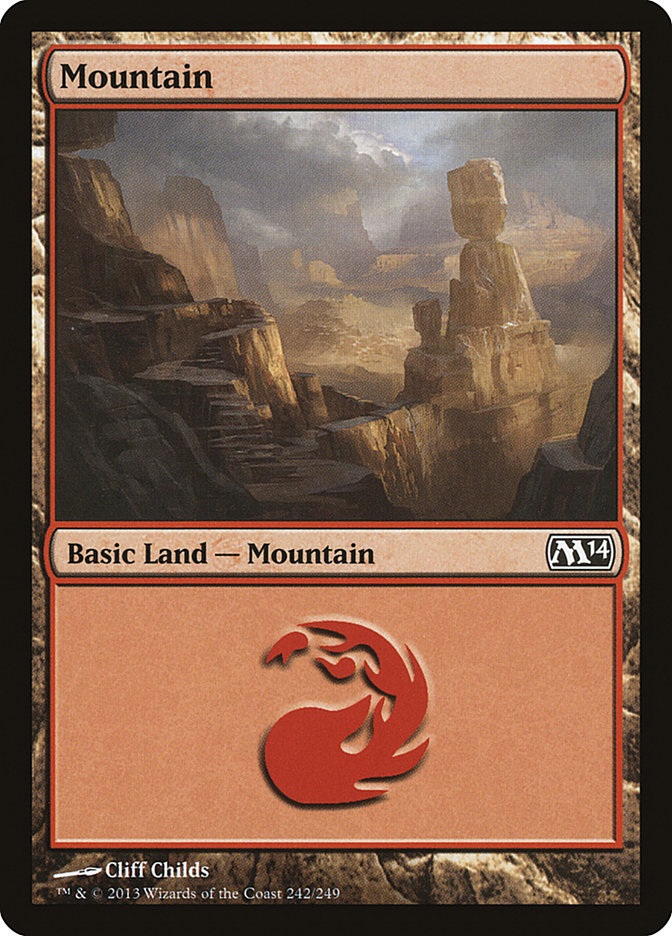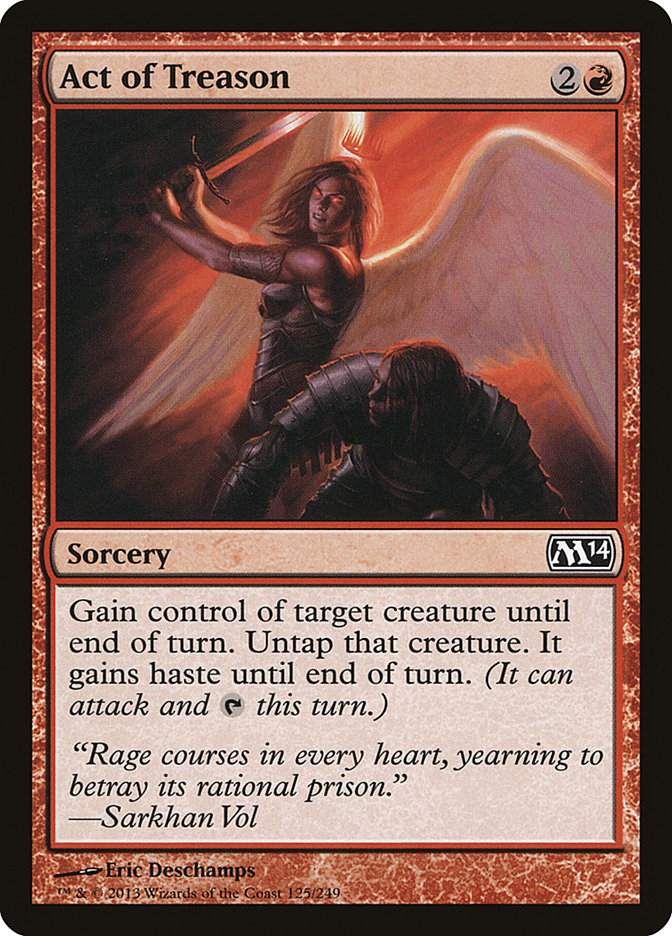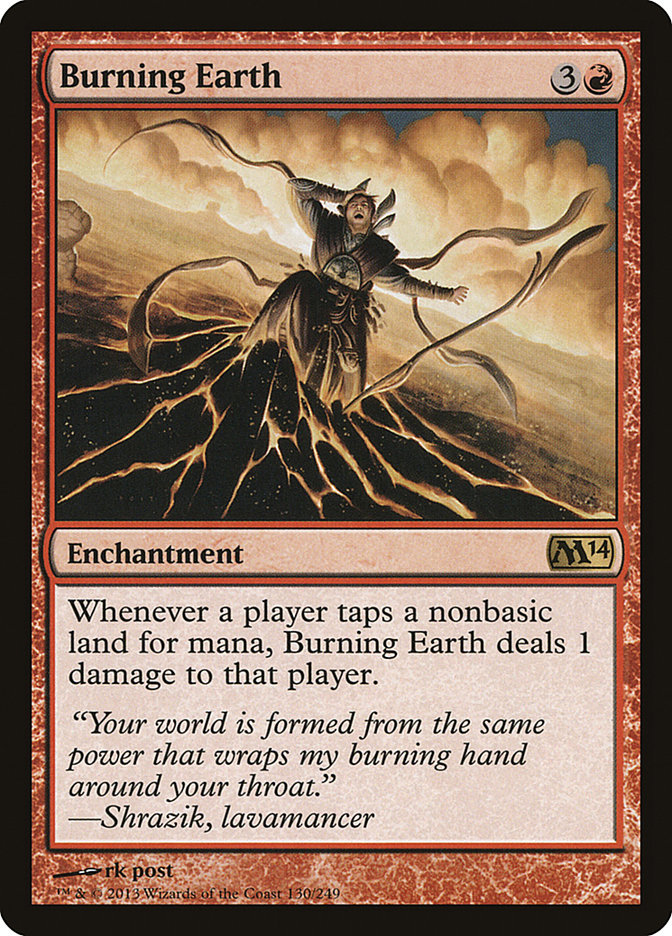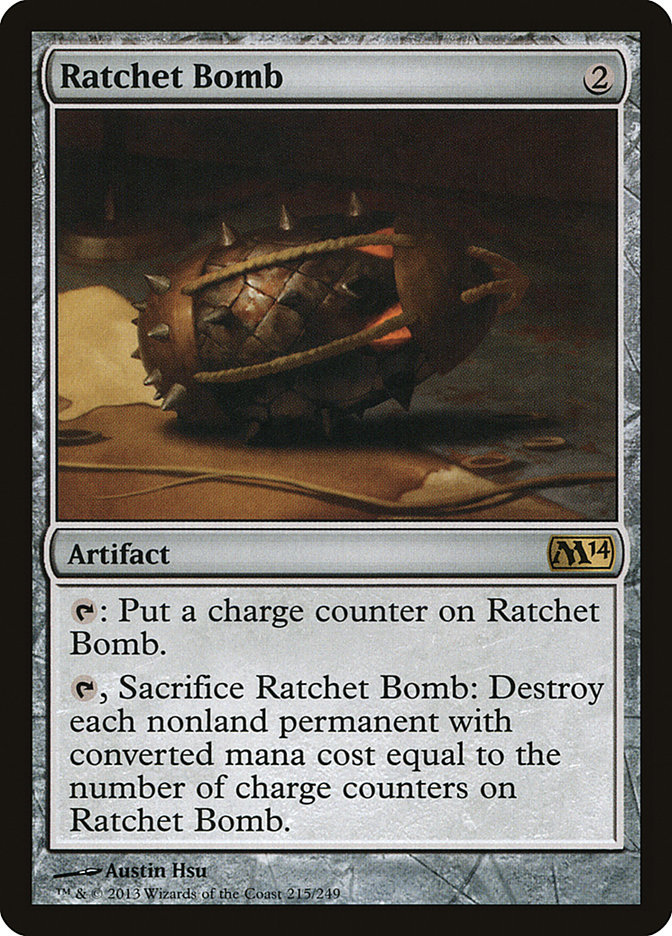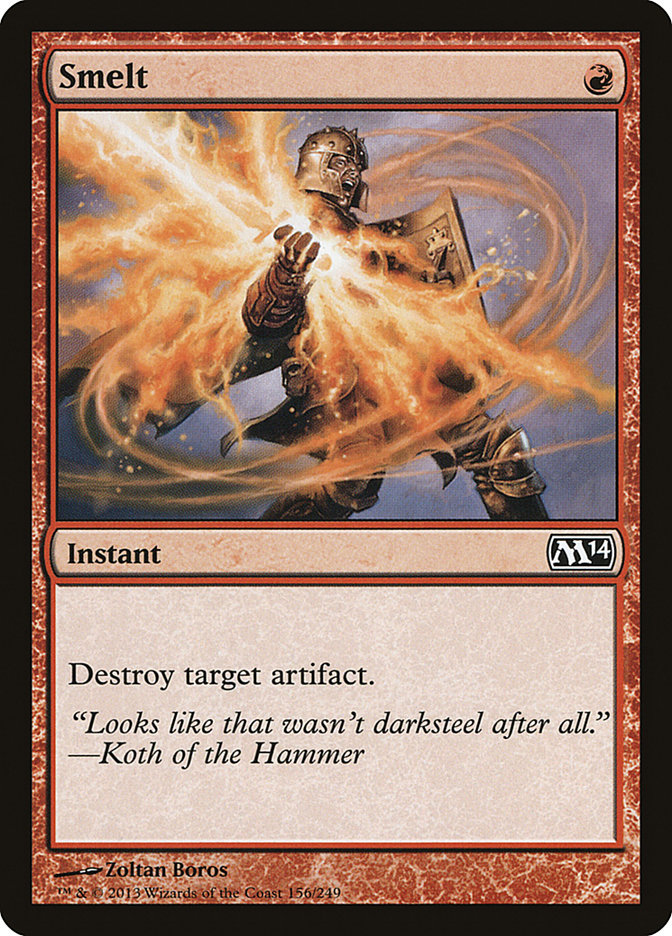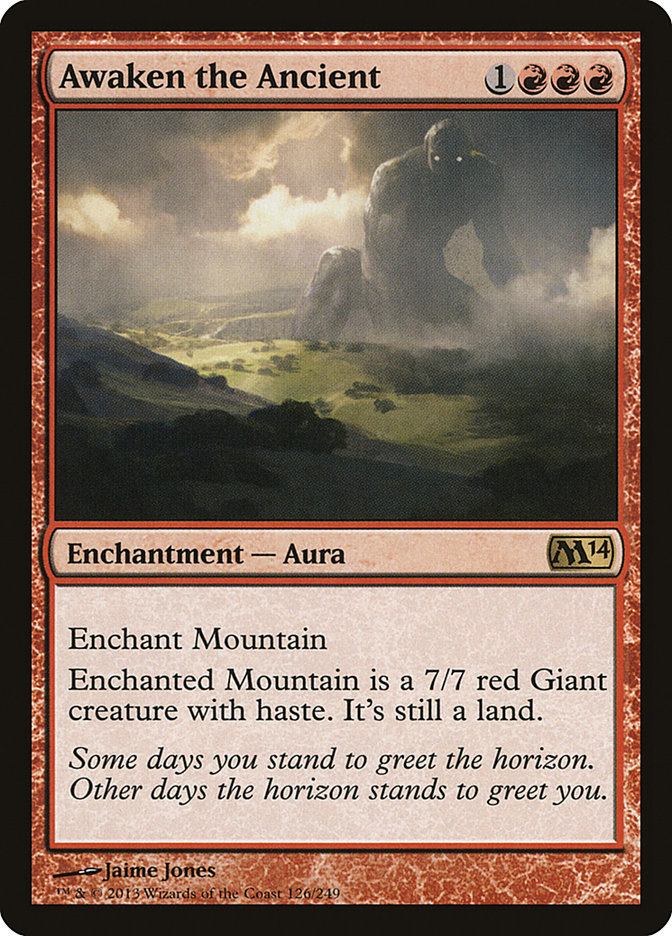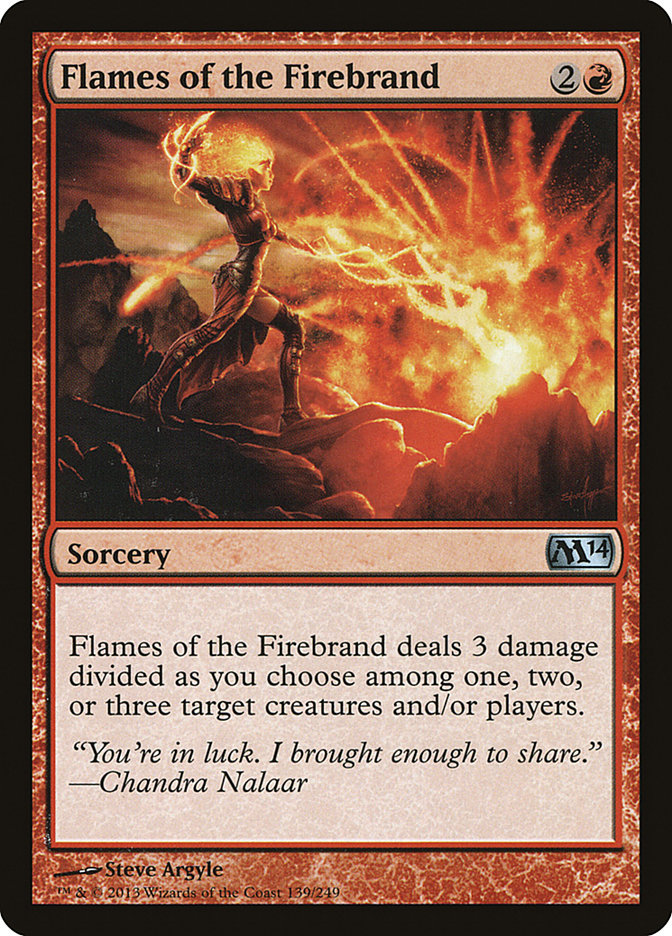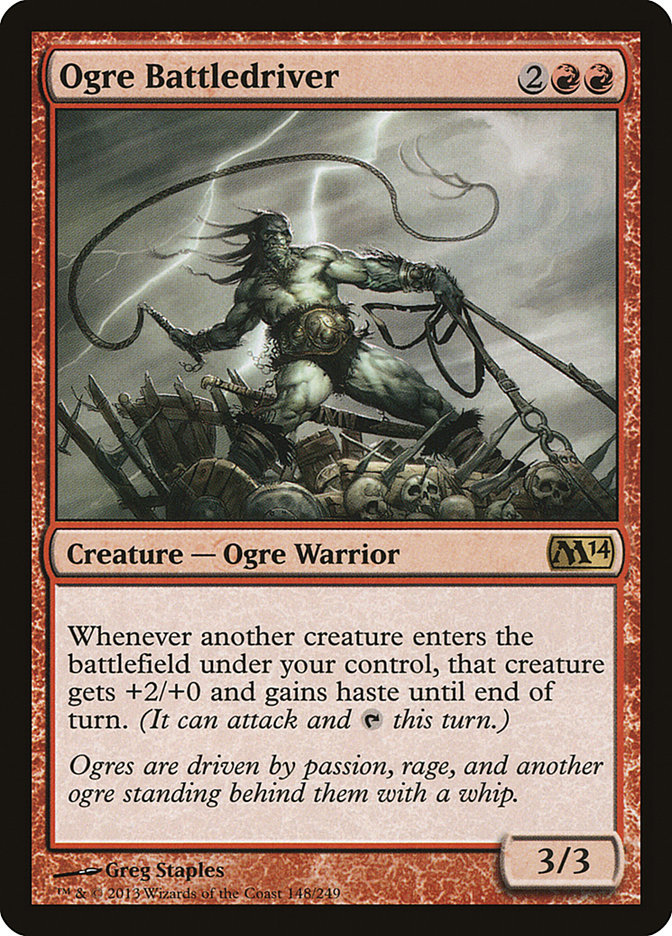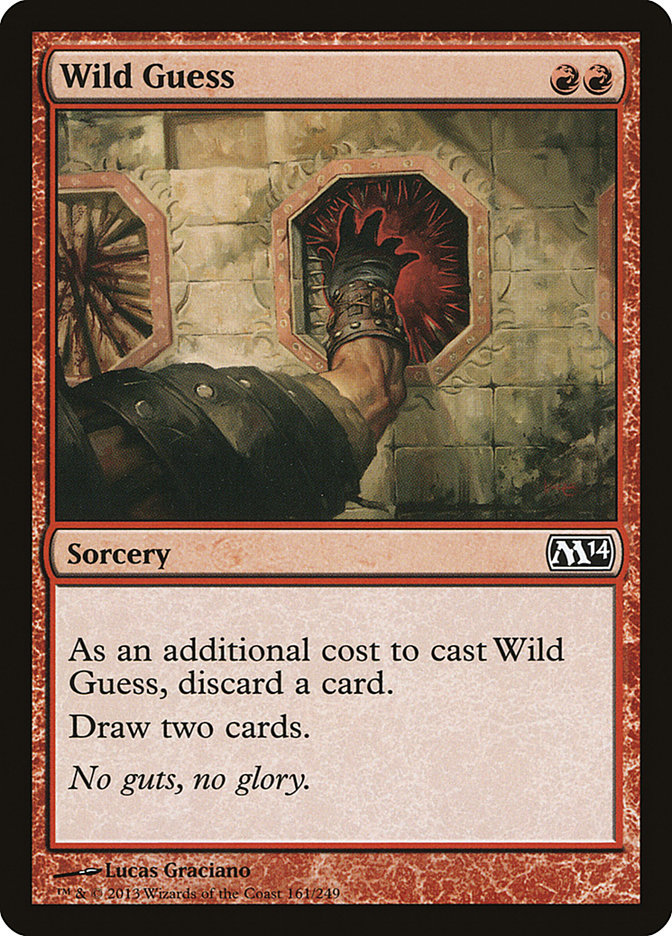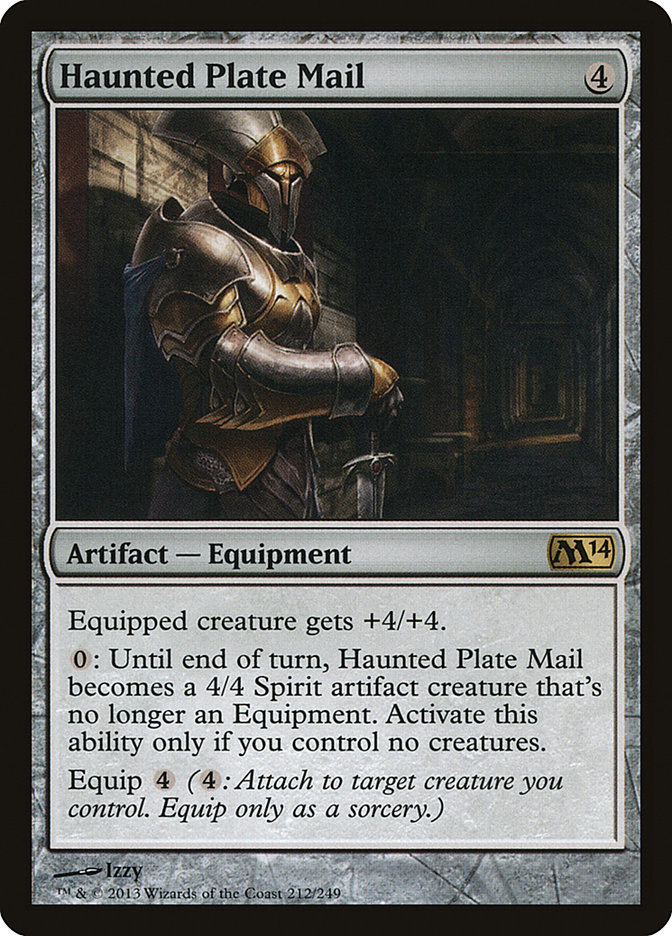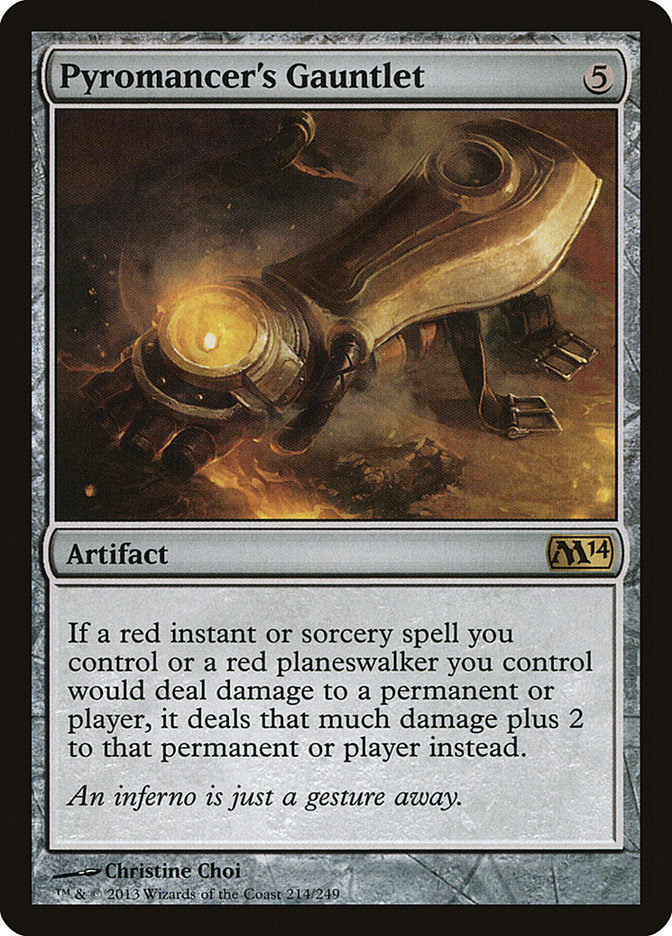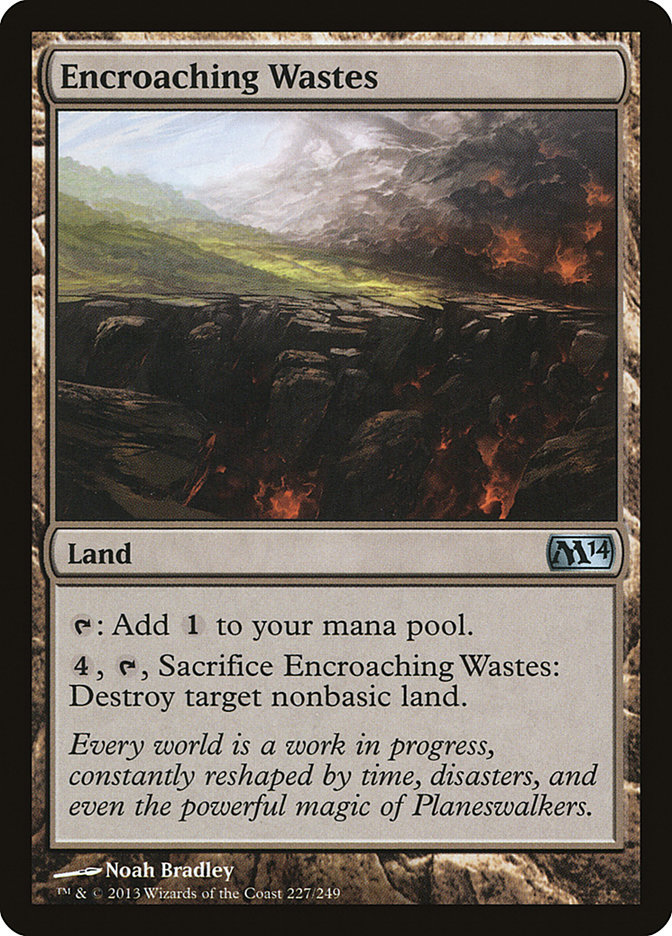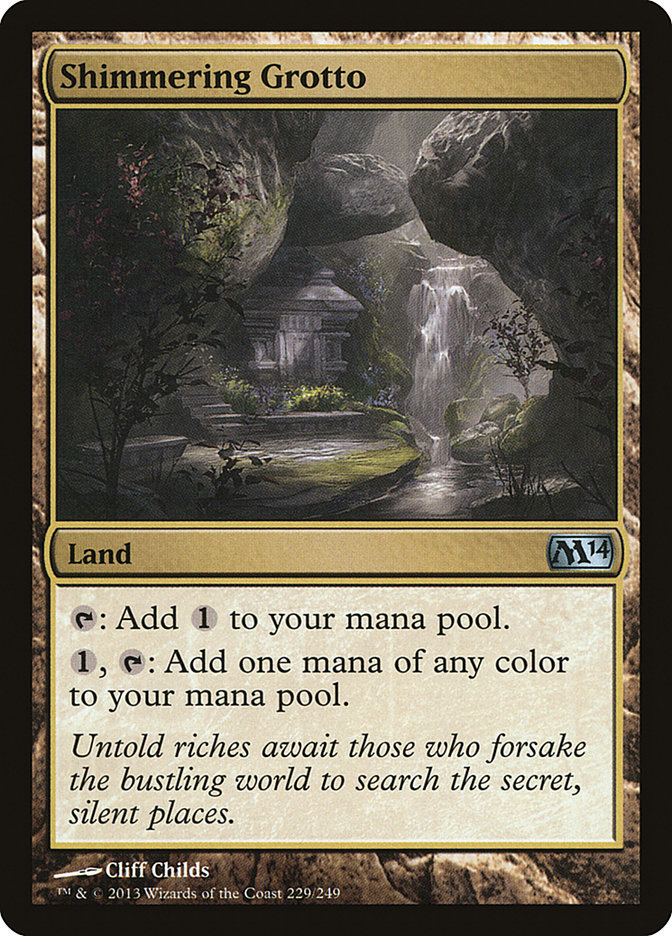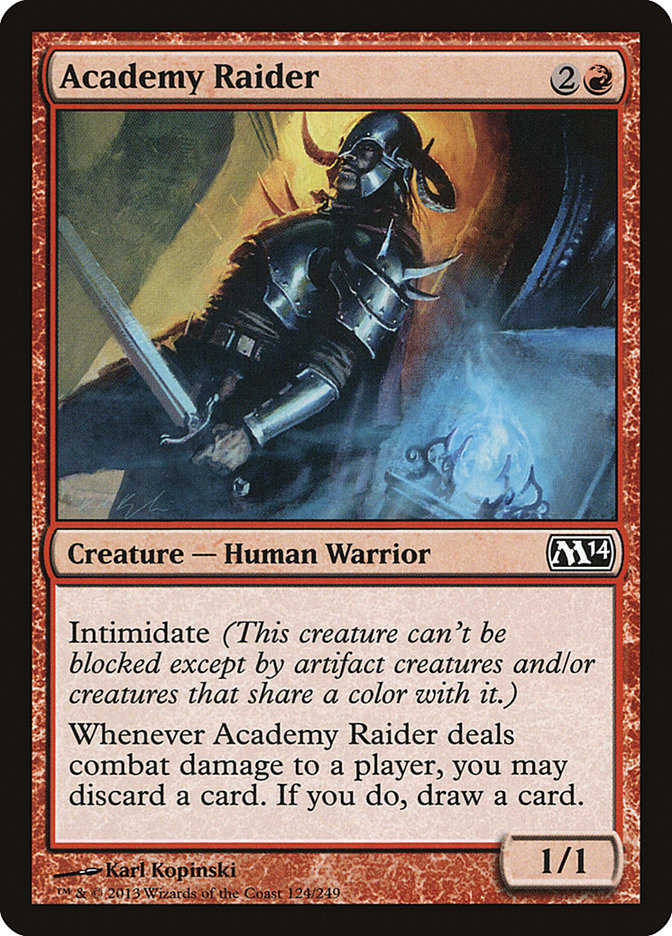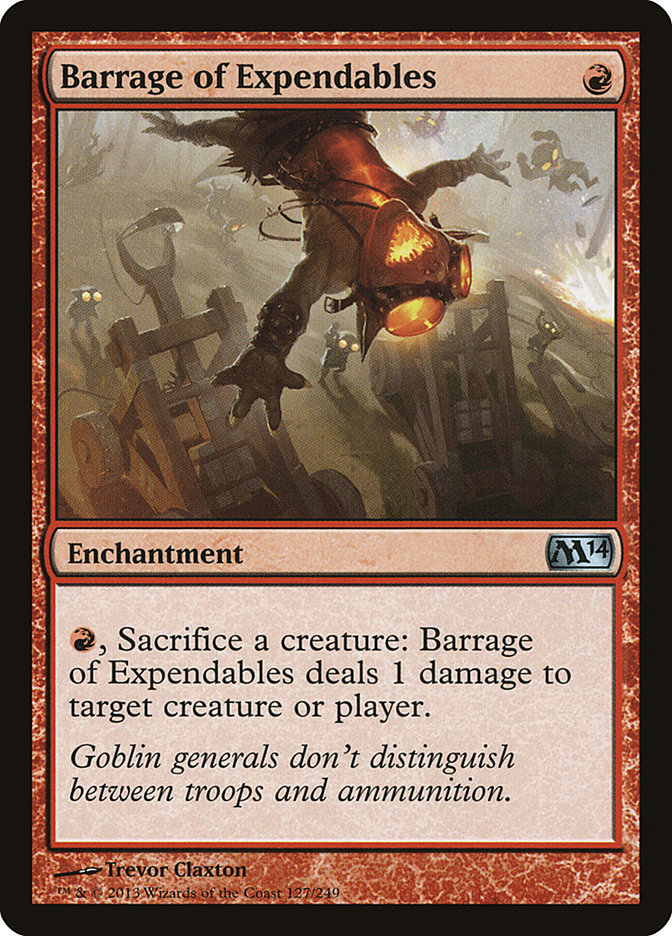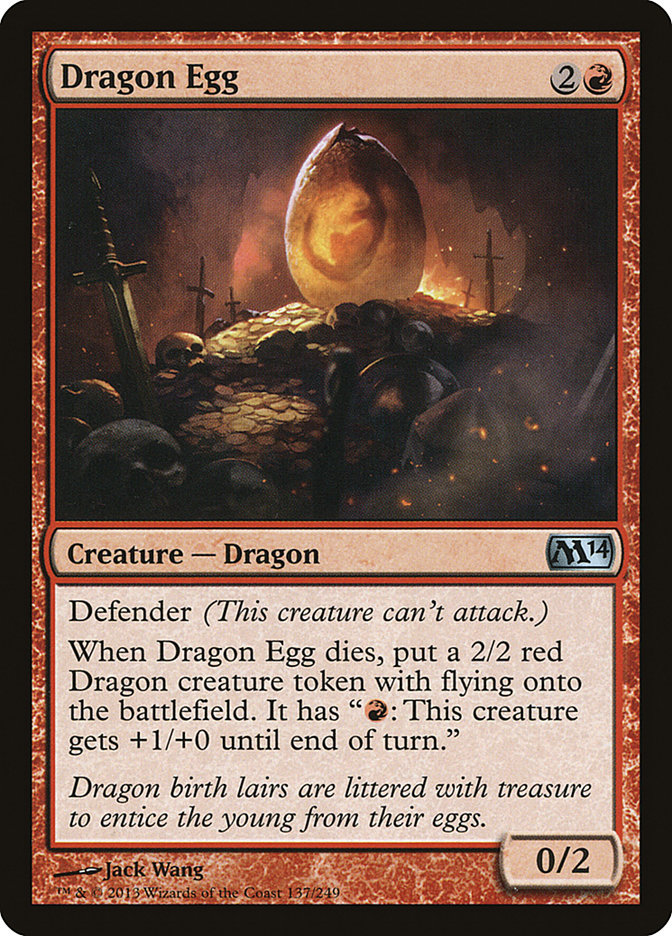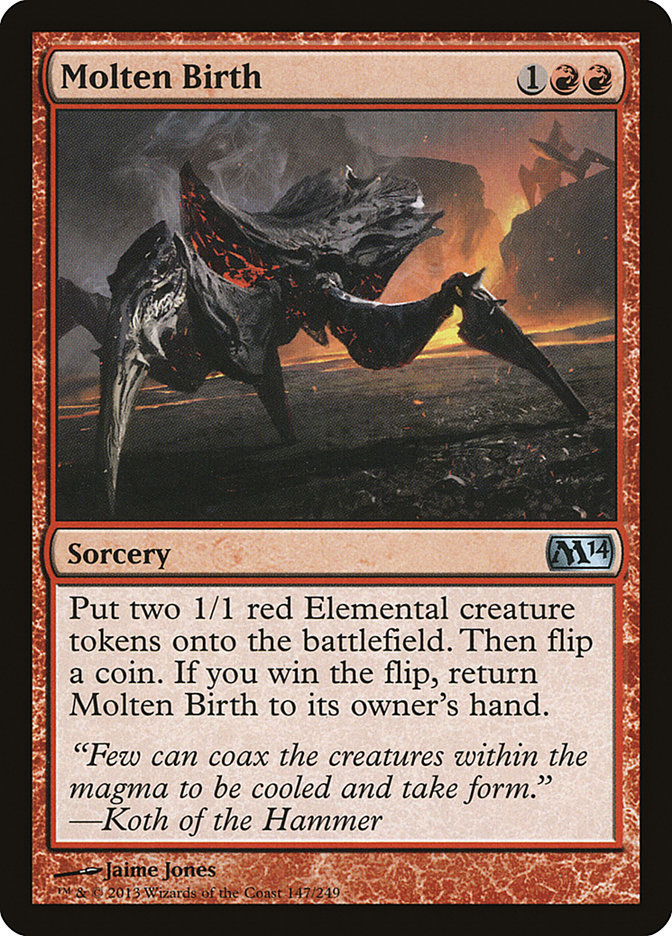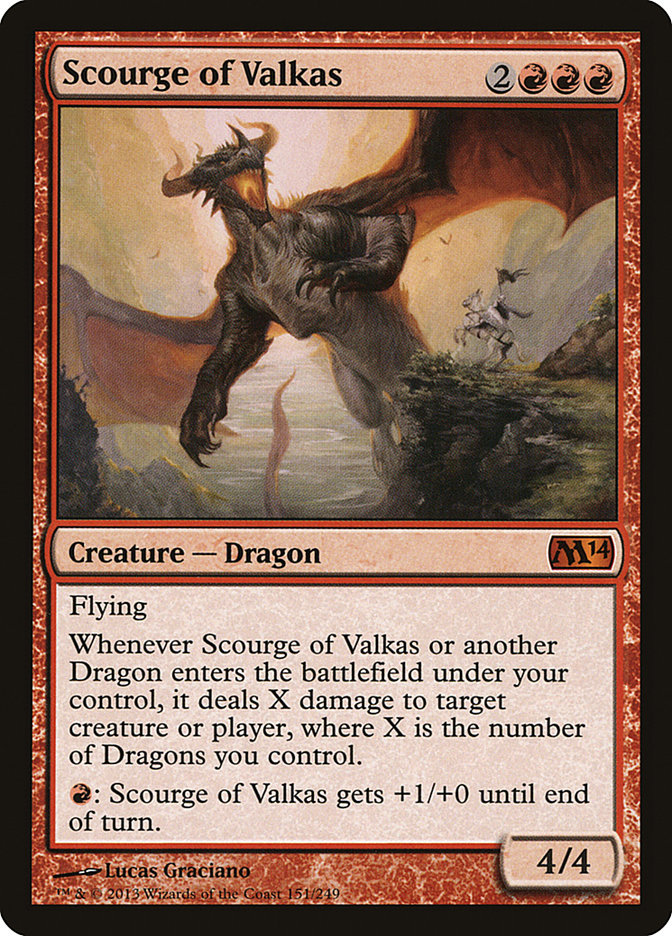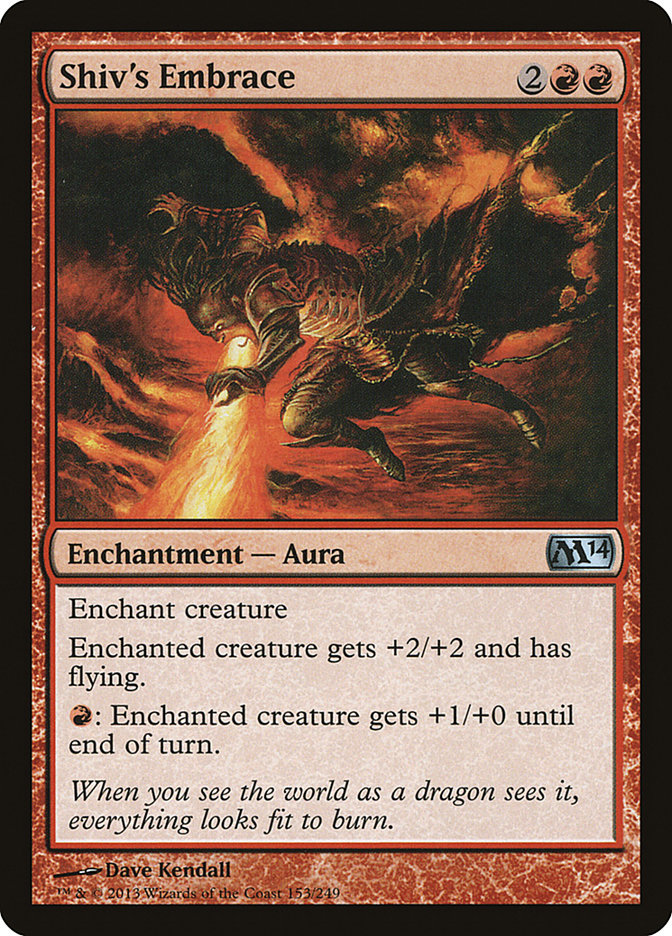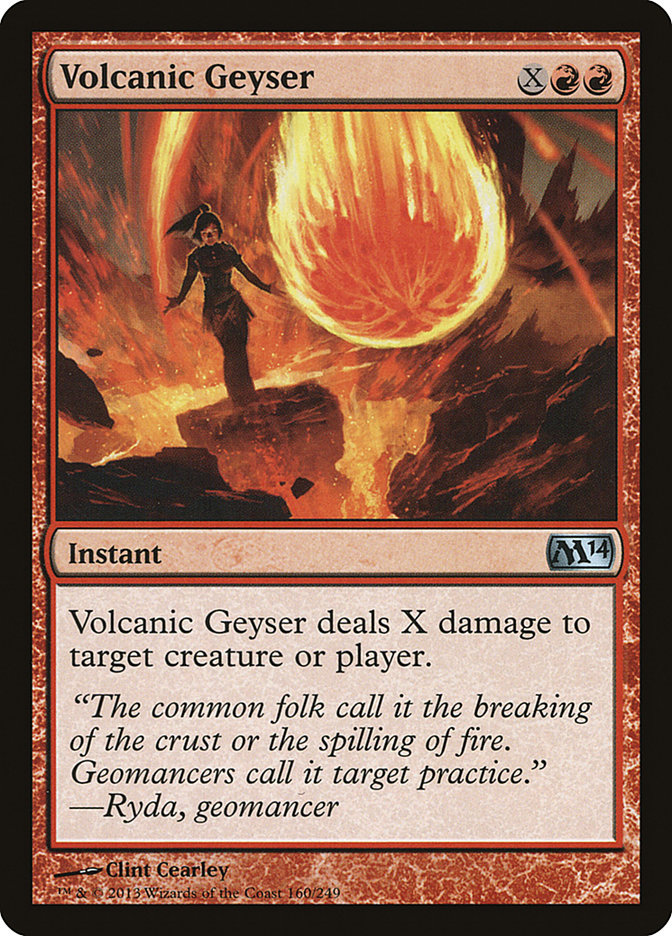This is not the Red Box review from Patrick Sullivan.
I feel like just getting that out of the way.
Like a lot of people, I look forward to reading Patrick Sullivan thoughts on the color red whenever I get the chance. He is one of the few people I know who says things about the color that make sense to me. Usually when I look at people’s views on red, even smart, experienced people, they make very, very little sense to me.
A part of the problem I think when most people examine red is that they misidentify red’s portion of the color pie. Direct damage is one of my favorite parts of Magic (along with countermagic). Using life as a resource is one of the pillars of the game of Magic, and yet people usually don’t understand the difference between how red works as an aggressive color and how white works for example.
Patrick understands that difference. In his interview for Pro Tour Dragon’s Maze, he talked about how the red aggressive deck that he worked on was "really more like a white deck." What he was talking about was that the deck was a bit more focused on creature-based damage and didn’t have much in the way of reach.
A typical way to achieve reach is simple: burn. Haste creatures are another way to achieve reach. Other direct damage (like the redirection of damage from a Boros Reckoner or the trigger of Hellrider) functions as a kind of burn, but it all boils down to the same thing. Cards that can immediately reduce the life total actually have a different kind of impact than other classes of cards.
One of the ways that people misidentify how they are supposed to play in certain situations with red is that they don’t know when to throw away cards in order to achieve damage. For the majority of people, this means that they don’t know when to lose a permanent in order to achieve temporary damage.
One classic example of this is attacking at a loss (usually of one card, but sometimes of many, many more) in order to achieve some amount of damage. Perhaps the most classic example can be summed up in this play, which is as old as the hills:
Turn 1: Lightning Bolt you.
Sometimes when I think about this play, I picture a young Patrick Sullivan slinging a freshly bought or traded for Lightning Bolt on his first main phase.
When I was first starting to play Magic, I would make fun of that play. It seemed like such a foolish choice. What if the game state changed? What if you needed that Bolt to kill a creature later? Couldn’t you at least wait until their end step? Many years later, my first State Championship win started with round 1, game 1, turn 1, main phase Bolt YOU.
This is not a claim that one should always toss away cards to get damage in at every available moment. Rather, it is a reminder that card advantage is not the only force at work in what Patrick Chapin would call "the physics of Magic." Proper play involves measuring all of the forces at work in a game and properly identifying "what is important."
People that learn the value of throwing away cards for damage are taking a step that often goes against all of the training that they’ve been given in how Magic works. Many players start out in the very beginning of their play thinking that a card like Pillar of Flame is best pointed at their opponent the first chance you get; after all, you are trying to get the opponent to ZERO. Later, though, we’re shown how to exercise some patience and pick and choose our moments. Holding on to that Pillar until later, we learn, is much more effective. And, quite honestly, it usually is. We train ourselves on this skill until our new instincts know to hold back.
The move back to learning that throwing away a card can be correct is a hard step. It flies in the face of everything we’ve learned so far. Eventually, though, you can learn that it can be reasonable. Some cards in fact only let you make that play. Take Lava Spike for example. What else are you going to do with it? The card doesn’t even let you try.
Here another danger can come in though; you get so comfortable with throwing away cards for the hope of damage now that you fail to realize when you need to not make that play (even in a deck with Lava Spike in it, even with a hand with Lava Spike in it). There is a balance to be struck, and it is contextual to so many things.
Red is tricky because of the volume of cards that can add up to create situations where concerns of life can trump card advantage as well as having the versatility to let a player shift between being more controlling (mopping up creatures with burn) or more aggressive (to the face!)—it’s one of the reasons that I view Burn as an archetype in Legacy as one of the most difficult archetypes to play. I remember getting a lot of flack in the chat during the coverage of the second SCG Invitational because I made a claim that the Burn player was going to have to become the control player against Goblins. "No way," a lot of people yelled. "Burn is not a control deck! What are you, an idiot?"
Well, if you know the matchup, you realize that in a pure aggro-on-aggro race Burn generally can’t win without a miracle of some sort happening. So unfortunately for the poor Burn player, they would have to turn their fire on to the Goblins coming at them. For some Burn players, even this path would be a problem because they would lack the ability to finish their opponent if they used up all their gas on the little creatures. This Burn deck, fortunately for its pilot, was also packing Grim Lavamancer and Figure of Destiny. It was prepared to be able to finish the game once it had mopped up the table. Not all Burn decks are built to do that.
It’s what a deck is capable of doing consistently in a context that helps one decide whether a card (or even a strategy) is proper for the moment. Take one of the classic "truisms" about the red mirror: "Always draw. It’s an attrition war."
This was true once, but the last time I can remember it being true was maybe around Lorwyn/Shards Standard. Before that, it wasn’t true around Time Spiral/Lorwyn Standard. Before that, I’d really need to think about it carefully. Yet even so, I hear people say it. Probably because it was true for years a long time ago.
Currently in Standard aggressive red deck mirrors, you don’t want to be the one potentially falling behind when it comes to a Noble potentially getting out of reach or a Hellrider causing that last overwhelming bit of damage. In the Standard of a few years earlier, cards like Plated Geopede and Hell’s Thunder made being on the play important.
Looking at the now and the history of complexity in the game regarding something as "simple" as an aggressive red deck, I’m not surprised that I’ve basically seen an unending stream of terrible opinions on which cards are going to matter and which won’t. Some really great players simply don’t get it. Hell, I’ve seen streams and playbacks from people who are incredible at complex decks like The Aristocrats, but watching them play red they are lucky to have a turn where they make only one mistake and some turns have three or more important ones. Patrick Sullivan told me he won’t be writing a review on red for this set, so since he won’t be putting some sanity out there on the topic, as his official "brother from another mother" I thought I would try to do so.
One of the things that some people notice is that I’m often very open-minded when it comes to the possibility that a card could be useful in Constructed. This is a talent that I like to cultivate when brewing. In my opinion, it is in testing that you cull out the overindulgent and the overly hopeful elements to a deck, but if you don’t try to reach for the highest point, it is rare that you end up close to it.
I’m going to break down the cards into categories of excellence, primarily with an eye for Standard. Here are the general categories I’ll be splitting them into: Excellent, Good, Sideboard, Role Player, Marginal, and Unimportant.
First, though, let’s start with one card in a category all by itself.
The Wildly Overrated
I’ve asked a ton of people I test and work on decks with why people are so in love with Mindsparker.* None of us know. Mostly, I think people are looking at the powers and abilities of Mindsparker out of a context and just appreciating it for what it is. Someday, this card may be an important card. In formats that are not Standard, it may be. But right now, I’m hard-pressed to see a reason to play the card over Boros Reckoner if I’m really going for a red deck. Mutavault and mana considerations are the only reason that spring to mind.
Even with that, I don’t see it as being more worthy of consideration than Chandra’s Phoenix, Pyreheart Wolf, Pyrewild Shaman, and (for the time being) Flinthoof Boar in red splashing green, not to mention a few other cards. Three mana is a lot of mana, and the blue and white decks are often using red and black cards to kill the creatures they are after. As for those times when you get in some damage on a Supreme Verdict or Terminus, you will usually just get in more damage with Chandra’s Phoenix. This card is most likely a marginal card, though it might move up to role player or even a good card should the metagame change sufficiently.
With that out of the way, let’s go on to the rest of the overview in earnest.
The Excellent
This is one of those cards that a lot of people aren’t going to fully respect because they are focused on one element of the card: "1 damage." This is especially true if they are focusing on the "1 damage to a creature" element, where they might just view that as wildly insufficient for handling a creature. What they are missing is Chandra removing a blocker and creating a race situation for a deck that wants to race. Yes, they can crack back and take Chandra out, but it means that they are getting into a race to do so.
That is, of course, on a board where the Chandra isn’t removing creatures entirely. There, the added bonus of even a touch of damage is a big deal, as you get card advantage and remove their life. On a stalled board, Chandra, Pyromaster is more reliable than Domri Rade for card advantage. Finally, the ultimate on Chandra seems very likely to throw nine damage out without much effort. Should it trigger on something like Flames of the Firebrand, it seems pretty amazing.
Chandra is no Koth in terms of sheer ruthlessness, but she is definitely very powerful.
Again, I have no idea why Chandra’s Phoenix is being pooh-poohed by so many. Chandra’s Phoenix has two things that red decks love in their creatures: haste and evasion. The amount of damage that one can get in with a Phoenix is really remarkable. Now, it is certainly hampered by the existence of Scavenging Ooze, but that is actually a pretty big problem in and of itself.
It is worth noting how great Phoenix plays in combination with a lot of other great cards that red will already have access to. Being reborn out of the fire doesn’t just happen with burn spells—it also happens with Chandra herself. This combination is also noteworthy in that Chandra’s Phoenix can do a bang up job defending Chandra of it comes to that, and an ultimating Chandra, should it not outright win the game, may also actually return Chandra’s Phoenix to your hand. The Phoenix plays nice with cards like Falkenrath Aristocrat as well. While a Phoenix only hits for two at a time (unless helped out by a Stonewright or some other card), an evasive hasty two is pretty damned amazing.
I know that a lot of people are gushing about the Pyromancer, but I have to tell you that I almost put it one category lower. The big reason is that I’m thinking about Young Pyromancer as a Standard card for a red-based aggressive deck. Now, don’t get me wrong, the card is completely amazing in some formats (it may solve my Nimble Mongoose problem in Legacy for example), but in Standard it has a lot less help.
That being said, it is still a two-mana two-power creature that does a great impression of a Quirion Dryad of sorts, just putting its counters out into the world rather than keeping it for itself. I envision Young Pyromancer as having its strongest home in a slightly slower build of red that might be working up to Thundermaw and the like, using the Elementals from the Pyromancer as little monsters that can help gum up the board against a more aggressive deck. Particularly if an opponent is attacking with a large, non-evasive creature, a Young Pyromancer can turn a race completely around. While only barely in my top category, it still makes the grade.
Simply put, the only drawback of this card is Boros Reckoner. Turning your lands into damage resources is always an amazing thing for a red deck and a huge part of how they can go over the top in creating damage. Sometimes, it can simply be resistance to mass removal; other times, it can be having one more hard-to-kill blocker making the race math go wonky. It is awesome to see this card back.
Best basic land in the game. ‘Nuff said.
The Good
Another two power for two, Goblin Diplomats has the deceptively powerful ability of being able to remove all (or nearly all) of your opponent’s blockers. In matchups that can be lightning fast, having a reasonable two-drop that can pull this off is great.
I used to play this card during Zendikar Standard as a two-of. The card isn’t flashy, but it can often get in a burst of damage that an opponent wasn’t expecting and is again a fine two power for two.
It’s amazing that such a simple card is still worthwhile, but it really is. Having access to more one-drop removal spells is a good thing and makes Chandra’s Phoenix more powerful as well. While not every deck wants the full eight Shock / Pillar of Flame, many will want some combination more than four.
The Sideboard Cards
This will share space with Mark of Mutiny for a little while, but regardless this is one of the many solid Threaten effects available right now. Some decks (I’m looking at you B/R) might end up regularly using a ton of these in the maindeck in conjunction with sacrifice effects, but even without that this is solid.
While not the Second Coming, this is still an incredibly powerful spell that is sure to change the face of Standard. For a while there, Ghost Quarter was acting like a Strip Mine, so Burning Earth is sure to be pretty similar to a mostly one-sided Mana Barbs. That being said, it does have the small problem of being more easily played around; as more basics start creeping into decks, Burning Earth starts looking very much like a weaker Manabarbs, especially since most people playing Manabarbs never gave a damn about how much they were hurt by it.
A lot of people are comparing this unfavorably to Warleader’s Helix. What they are missing is that this is a sideboard card against slightly larger creatures. There isn’t really a reasonable red-based deck that is splashing white (yet), so comparing it to Warleader’s Helix, a wildly impressive card, is a bit unfair. On the other hand, this card can actually kill a Loxodon Smiter and smack them at the same time. I’ve used this card to success in Extended, and I know Andrew Shrout while playing that deck was surprised to discover he felt the card was powerful enough to play—and that was in a much more powerful format.
I see this as a sideboard card to answer the unanswerable mostly (think Scavenging Ooze). It is also a great way to clear out tokens.
Great, cheap artifact removal if you need it. I’m not sure that you will right now, but that could easily change quickly.
This is perhaps one of my pet cards, but I did play it to a Top 64 finish at Pro Tour Hollywood a few years back. In certain metagames, this card is incredibly vicious. The first time you use it on a potent spell from an opponent, it feels incredible. I was using it to steal Flame Javelin (and occasionally Cryptic Command), but I can’t wait to steal and copy a Warleader’s Helix!
The Role Players
A lot of people don’t seem to like this card, but I can see it having a good home in the sideboard for red mirrors or in a bigger red deck alongside Thundermaw Hellkite. Secretly, Awaken the Ancient has a kicker cost of one, but when you pay it that is a whole lot of damage. I expect this card to see a reasonable amount of play.
This is a solid burn spell. Back in the day, Arc Lightning was a great spell but wasn’t universally played. We haven’t seen much of Flames of the Firebrand yet, but it’s time may emerge.
We’ll see more of this card down the line when the powerful four-drops drop out of Standard, but even before then this is still an efficient creature that has great interactions with a ton of cards. For now, it is outclassed, but there may be a deck that makes a bunch of 1/1s somehow . . .
I hate cards like this in aggressive red decks. I used to think that they were "great." Then, I played them, and I kept finding even with the cutesy tricks (like Chandra’s Phoenix) that they just weren’t worth the time.
In a bigger red deck, this could make an excellent finisher.
In a Young Pyromancer deck, this could add some extra oomph.
If you have room for extra colorless lands, this isn’t terrible.
If you need more of a splash than eight lands of an off color, I prefer this to a Guildgate usually.
The Marginal
None of these cards are worth major consideration, but they still might have some purpose.
In a deck that is somehow also incorporating a lot of creature enchantments and or reanimation, this could be in the mix. But now we’re veering out of red aggro territory.
I see this as a potential one-of in a deck that is running a ton of Threaten effects. Even then, it might not make the grade.
I can see this as a potential weapon in mirrors, where you chump block and then receive a little Dragon as a reward.
On average, you’ll get four tokens with this (math nerds, feel free to defend me in the forums); unfortunately, you’ll spend a ton of mana to get there. Perhaps in a grind, I could see this being a board card. But probably not.
I’d love this card to be more valuable, but it simply has too much competition. Still, it isn’t completely unreasonable after you’ve put in your four Thundermaws in a heavy-mana deck.
Again, the competition is Thundermaw. Shivan might have a role as a sideboard card in matches that really go big, but otherwise likely not so much.
Another potential sideboard card if a two-mana enchantment isn’t your style. Most likely, I believe that this is the wrong way to go.
I can imagine this as a one-of or two-of in a very high mana red deck. But probably not.
The Unimportant
In this case, I think we can reduce it to a simple list:
Battle Sliver
Blur Sliver
Canyon Minotaur
Cyclops Tyrant
Fleshpulper Giant
Lava Axe
Lightning Talons
Marauding Maulhorn
Pitchburn Devils
Regathan Firecat
Seismic Stomp
Striking Sliver
Thorncaster Sliver
Thunder Strike
The Conclusion
You might notice that I spent most of my energy not in the examination of the specific cards but rather in looking at the theory of red. This is because in general I think that is the more important thing, at least when it comes to first looks.
Over time, you can use empirical evidence to whittle things down. In a small enough space of inquiry, the truth will generally emerge with enough work on the empirical. But initially you have to have the right framework to approach it.** Having a stronger theoretical understanding of how to think about red cards is far more valuable than any individual red guide. When I looked at the vast majority of written opinions on red in this set, I kept wondering whether people really had a handle on the ways in which red is simply different in philosophy than other colors.
When I think about it like that, I begin to almost even like Mike Flores naming my work on life in Magic theory The Philosophy of Fire (a name I’ve generally cringed at, but it’s stuck, so I suppose it could be argued that it’s well-named). Having an understanding of what makes red tick will be far more valuable than giving stars to cards. The thing about the “marginal” cards I listed above is that they could end up being incredibly important. If you had told me that Quenchable Fire was a terrible card, I would have agreed with you, but I hope I would have realized that it was also the kind of marginal card that might have a potential use. Eventually, it was a valuable tool in red against Jund decks, and it definitely contributed to countless wins for me in that matchup.
I hope I’ll be seeing you this weekend in New Jersey for the SCG Open Series featuring the Invitational. If not, it will be on these pages.
Until next week,
*Between you and me, the near universal praise for Mindsparker is a part of why I wanted to write this article.
**For more on theory and empiricism, check out my oldie Good and Bad Magic.


